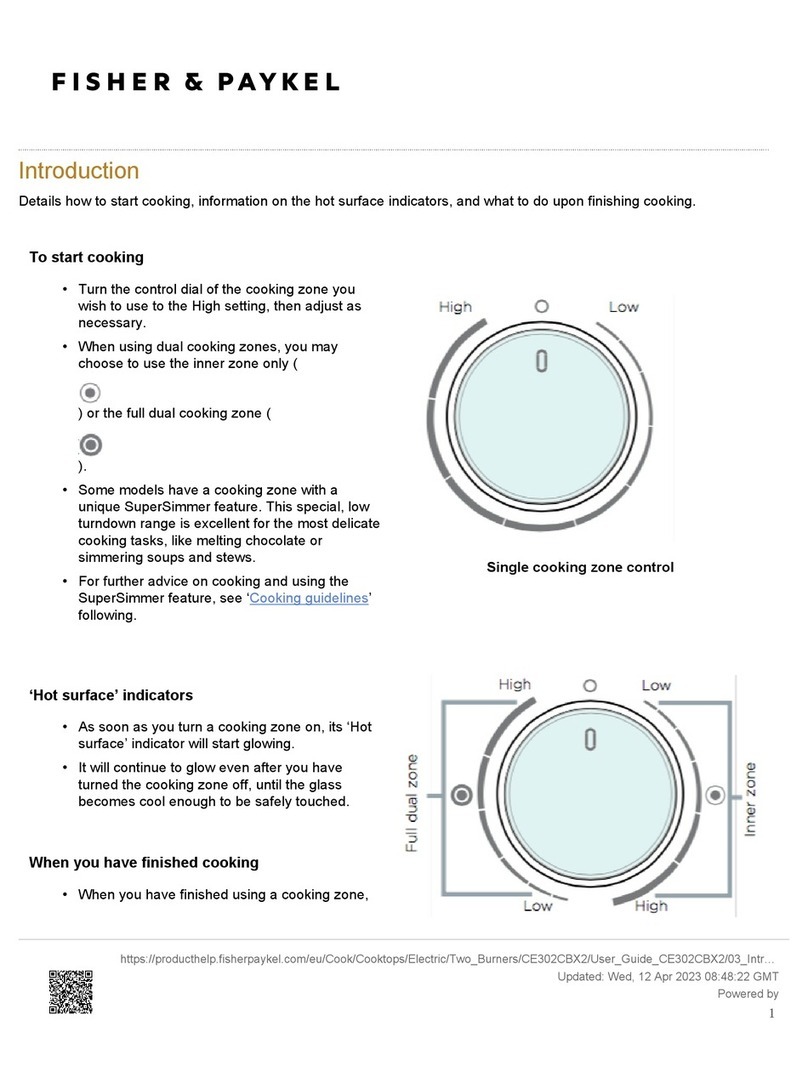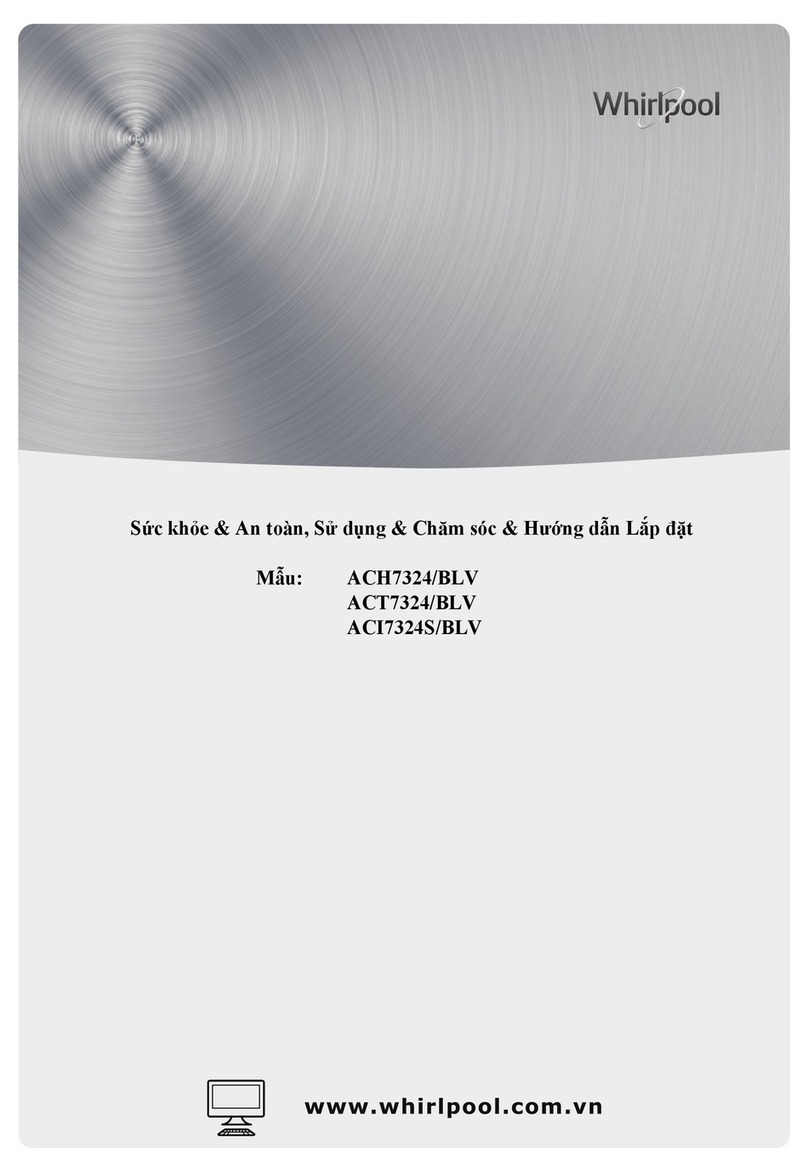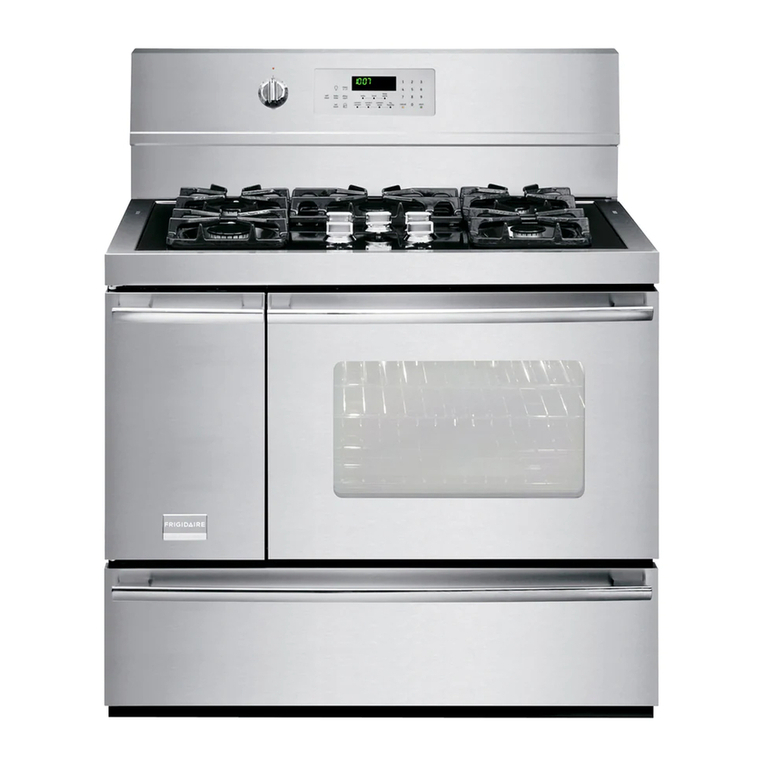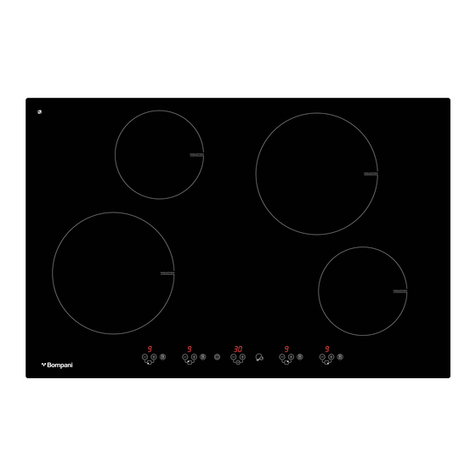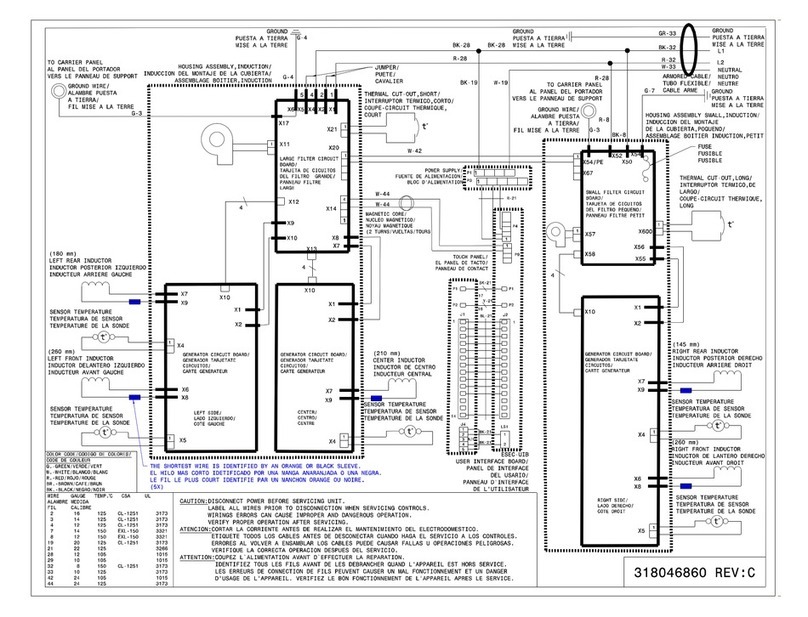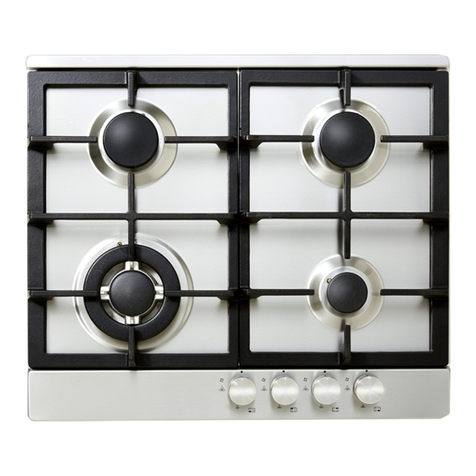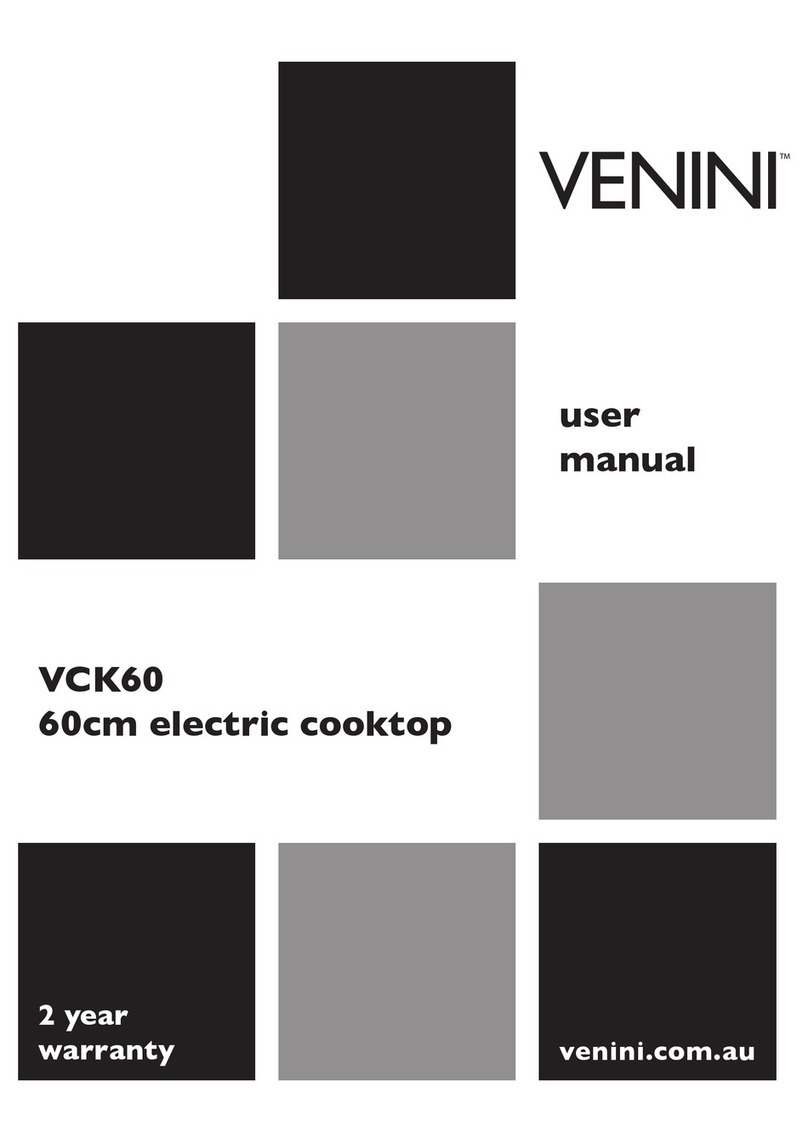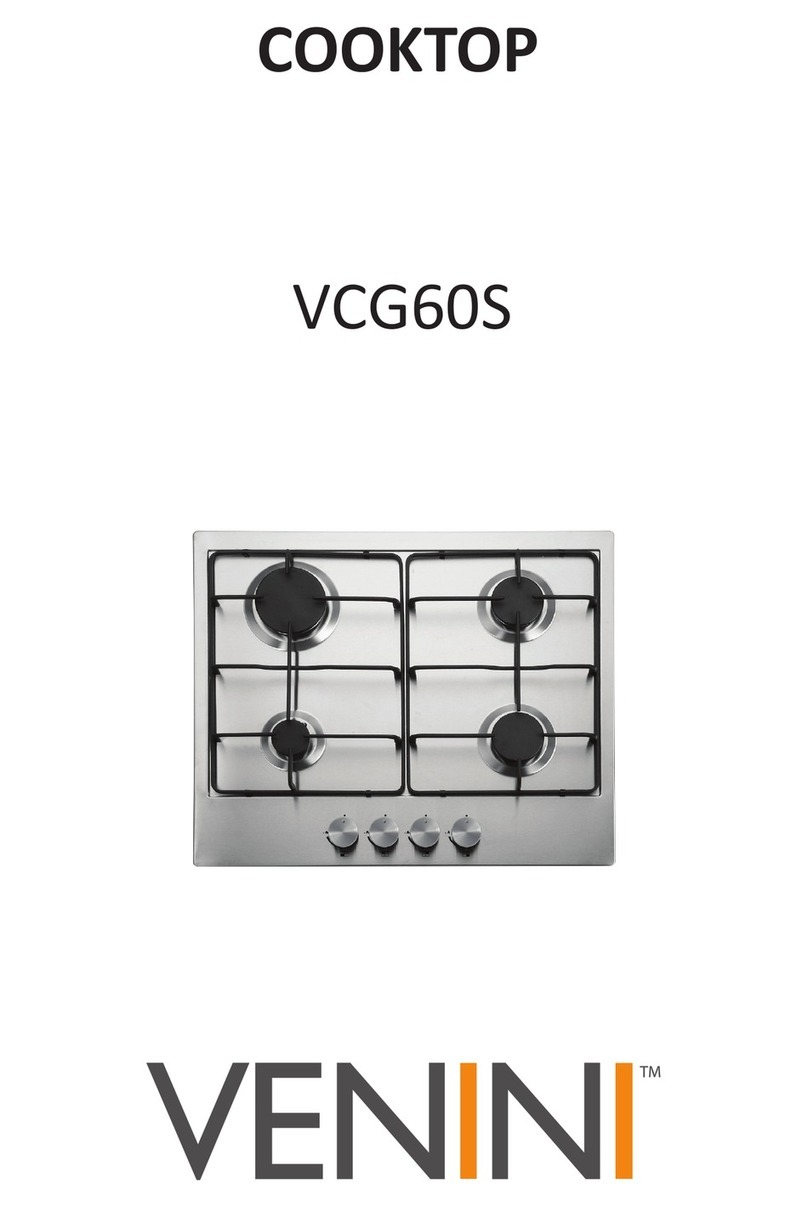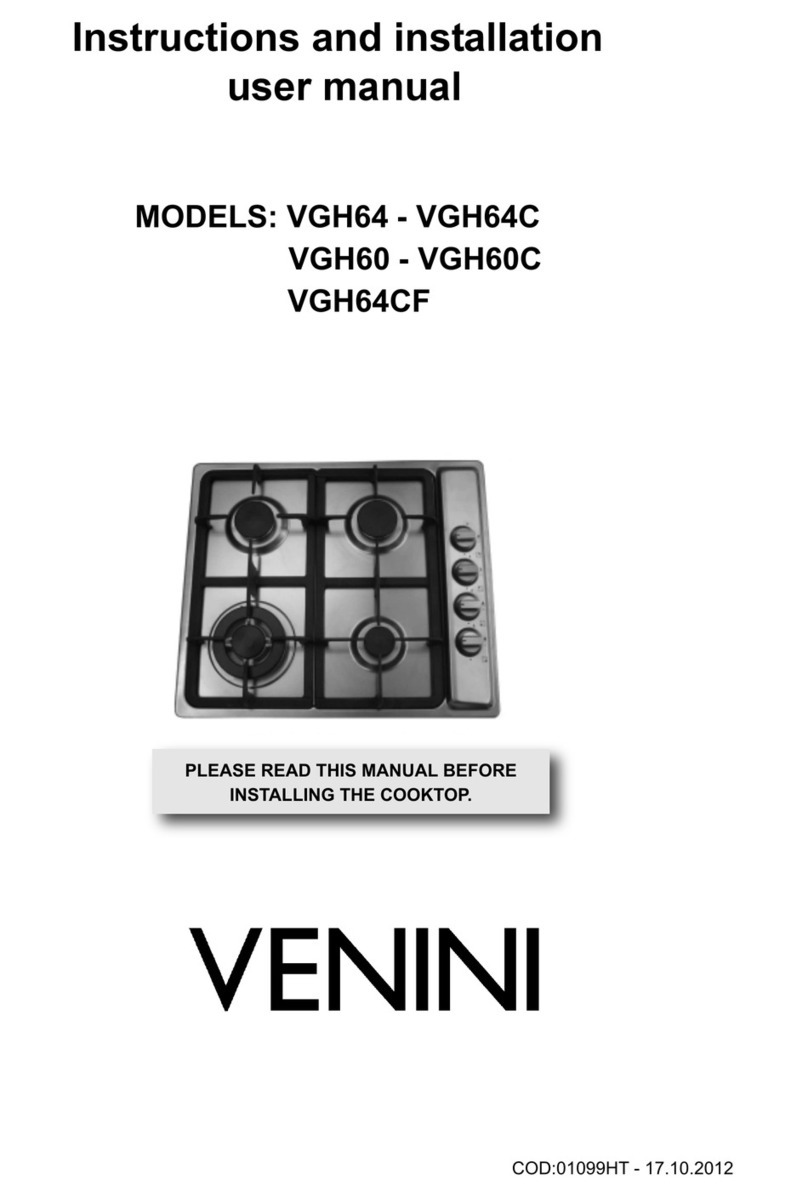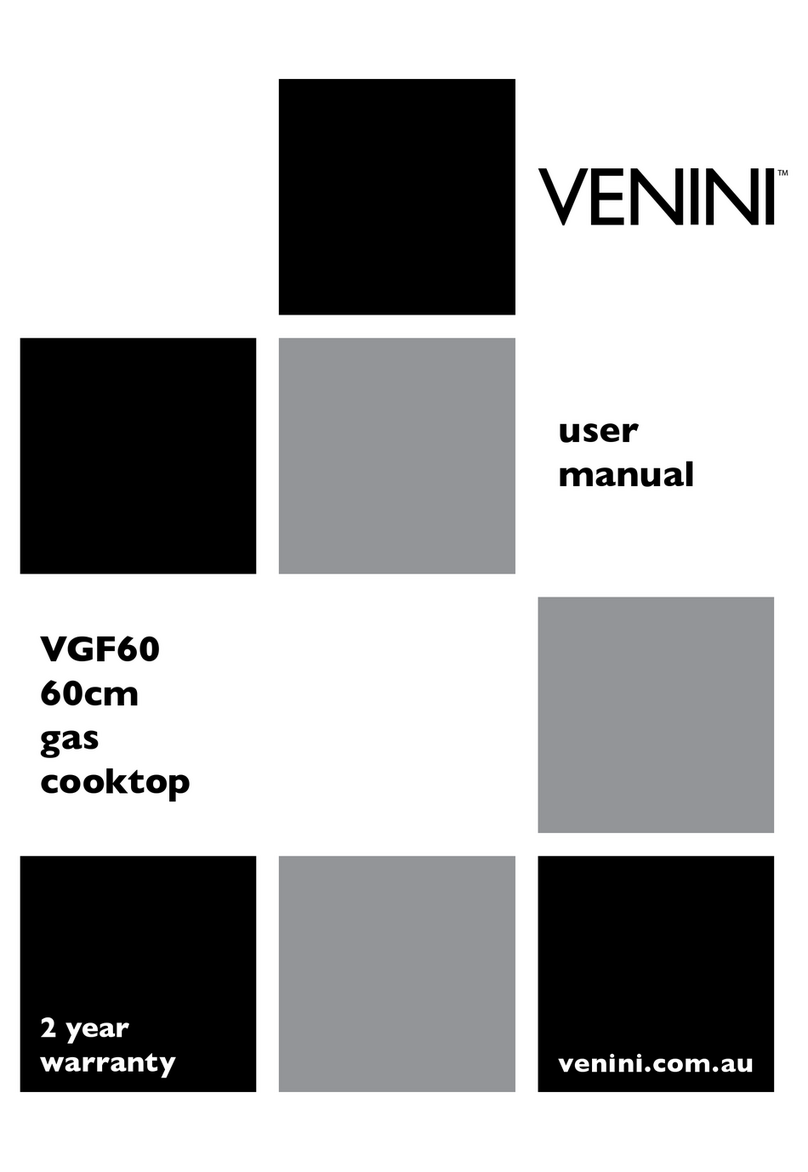
6
oDo not store chemicals, food stuffs, pressurised containers in or
on the cooker or in cabinets immediately above or next to the
cooker.
oDo not heat up unopened food containers, as pressure can build
up which may cause the container to burst.
oDo not place flammable or plastic items on or near the hob
burners, these types of materials should also not be placed in
the oven or the compartment below the oven.
oDo not leave heated oil or fat unattended, as this is a fire risk.
You should not fill a deep fat frying pan more than one third full
of fat or oil; you should also not use a lid.
oDo not allow fat or oil to build up in the oven trays, grill pan or
oven base.
oDo not place pans or baking trays directly on the base of the
oven cavity, or line it with aluminium foil.
oDo not grill food containing fat without using the grill trivet. The
grill trivet should never be covered with aluminium foil.
oDo not place hot enamel parts in water, leave them to cool first.
oDo not allow vinegar, coffee, milk, saltwater, lemon, tomato
juice or any liquid with high sugar content to remain in contact
with the enamel parts of the appliance. Spillages should be
wiped up immediately.
oDo not allow electrical fittings or cables to come into contact
with areas on the appliance that get hot.
oDo not use the appliance to heat the room it is located in or to
dry clothing. No clothing should be placed over or near to the
hob burners or oven door.
oDo not install the appliance next to curtains or soft furnishings.
oDo not attempt to lift or move cooking appliances by using the
oven door or handle, as this may cause damage to the appliance
or result in injury to the person lifting the appliance.
Cleaning
oCleaning of the oven should be carried out on a regular basis.
